Scott Felker
Three Creeks Naturalist
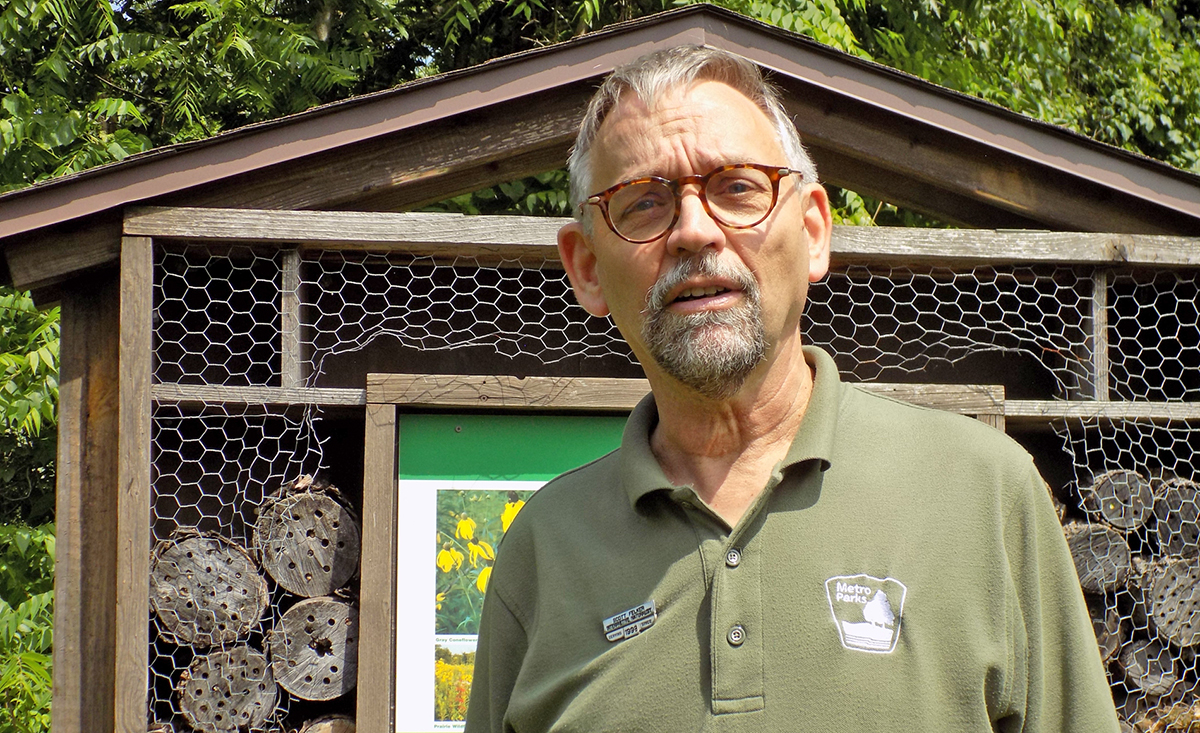
Hometown and background
I come from Rockwell City in Iowa. It’s a small town of about 2,300 people and it’s farm country. I went to Iowa State University, which is about 80 miles east of Rockwell City, and graduated in 1986 with a degree in fisheries and wildlife biology. I did a lot of moving about for summer jobs, doing fisheries and wildlife research in Wyoming and Utah as well as in Iowa. After graduating, I worked a summer job in North Carolina at Wildlife Camp, organized by the National Wildlife Federation, and then moved to Colorado where I worked for a year at the Keystone Science School. It was 9,300 feet above sea level and the winter got bitterly cold! Minus 36 degrees isn’t any fun!
After living in Colorado, I packed up my old and occasionally reliable car and headed west to California where I spent three summers as an interpretive ranger at Sequoia National Park and worked as an environmental educator during the school year. After California, I headed back to the Midwest to attend graduate school at Bemidji State University in Minnesota, where it was even colder than the Colorado mountains.
One of my seasonal jobs along the way was at Nature’s Classroom near Mount Vernon. That’s where I met my future wife, Paulette, a teacher in Columbus who brought her kindergarteners to the camp. We kept in touch over the years and love ultimately brought me to Columbus. I saw a job advertisement for a Metro Parks naturalist in a newspaper and got hired. I started in 1998 at Chestnut Ridge and Pickerington Ponds. In 2006 I started working just at Pickerington Ponds and in 2013 I moved to my current position as the naturalist at Three Creeks Metro Park.
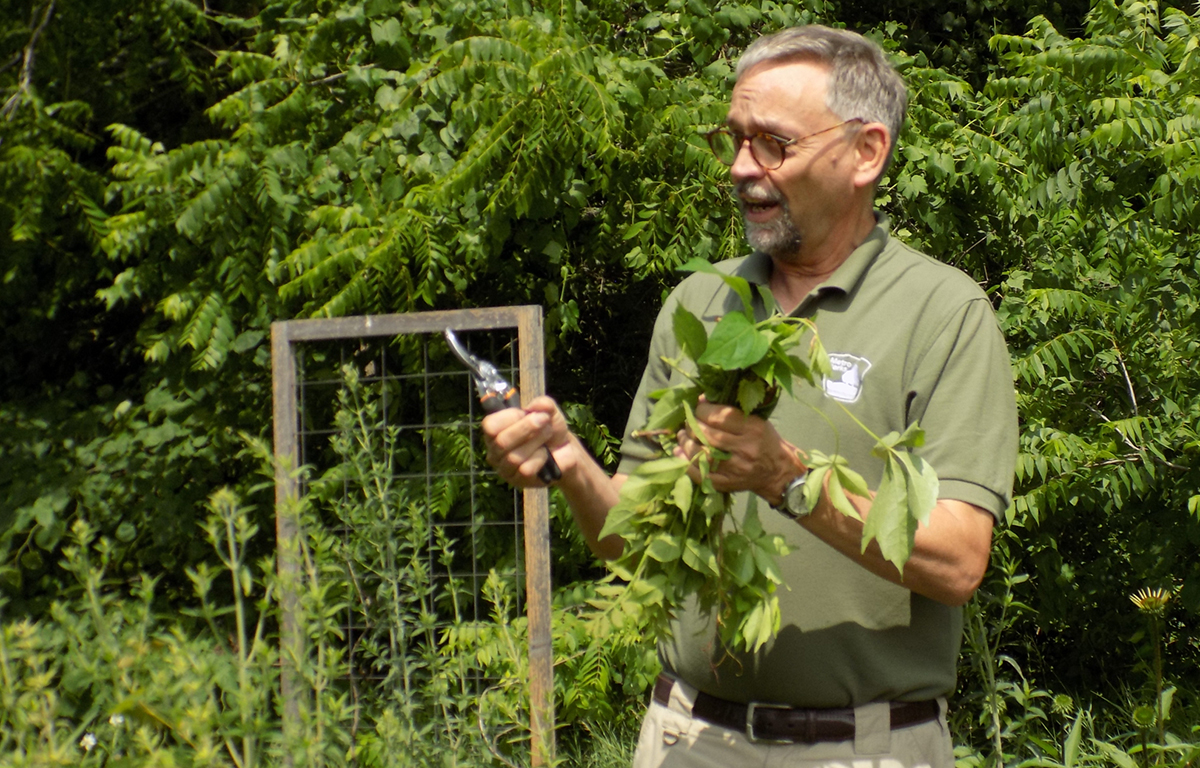
What I do at Metro Parks
As a park naturalist, my principal role is that of an educator, organizing and leading programs for both kids and adults. Programs often relate to the cycles of nature, so that visitors can see and learn more about the native plants that grow at the park and the wildlife that inhabit it. Currently, I’m offering programs for kids about bats, and some nighttime programs for adults so we can listen for bats in the wild and hopefully get to see them leave their roosts to feed. In cooler months, hiking programs are popular, especially longer 5- or 6-mile-long walks on the park’s two Greenway trails. In winter, I do a lot of programs off-site, at local schools.
I also get many opportunities to walk the trails, and so interact with visitors, and to walk off-trail and see changes that are happening at the park and on the creeks. Sometimes this yields information that can form the basis of a new program, or identifies issues that need to be addressed. For instance, treks along the Bluebell Trail, after flooding, helped me to see erosion damage on the trail, downed trees and inundations of litter. In fact, we had to re-route part of the Bluebell Trail this year, because of erosion. I organize litter pick-up programs along the Bluebell Trail, and this gives opportunities to teach about storm water management and the effects of flooding. Litter dumped well outside the park can find its way here through storm drains and flooding. There is a large sycamore tree at the confluence of the creeks whose base is about 6 feet above the usual water level. One recent flood left a water line more than 7 feet up on the tree, meaning that the water was a stunning 13 feet above normal.
What I love most about my job
I’ve worked at three wonderful parks, all of them on the southeast side of the park district. The steep hills at Chestnut Ridge were great places to walk, while Pickerington Ponds has changed so dramatically over my time there, with land added and many wetlands created or restored. These wonderful wetlands attracted ospreys and sandhill cranes to the park. Eventually, eagles were attracted there too. They nested near the heron rookery, which had the unfortunate consequence of driving away the many great blue herons that had created a rookery at Ellis Pond. Three Creeks is named for the confluence of Alum, Big Walnut and Blacklick creeks, and contains what I consider to be one of the coolest places in the whole of central Ohio — the Bluebell Trail in April, when the bluebells are at peak bloom.
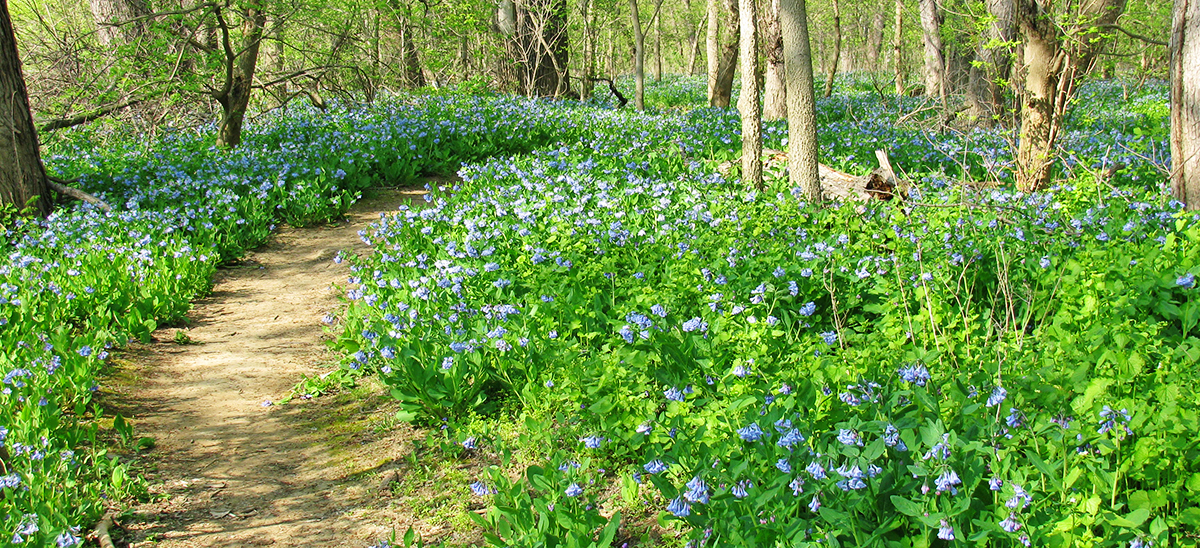
But what I love most about my job is simply the opportunity to get outside and be in nature every day, and to interact with people from all walks of life. I get anywhere between 10 and 40 people on my programs, often depending on the weather, and many of them are regulars who I have got to know well. I really enjoy building relationships with people this way, through a shared interest in nature.
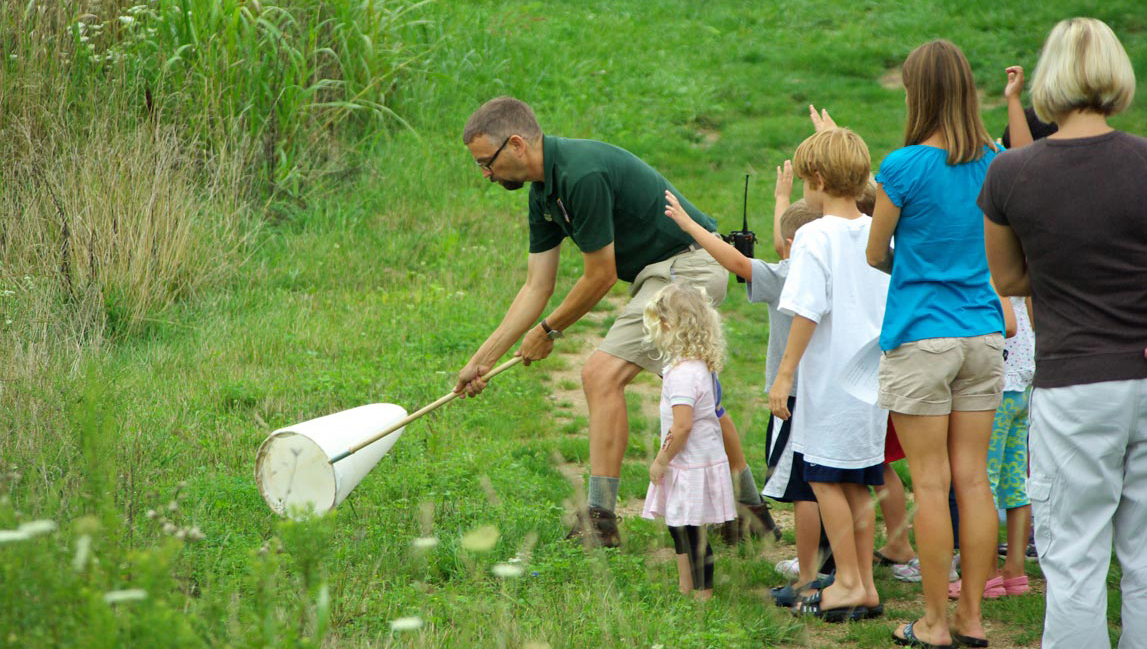
My favorite Metro Parks activity
I love birdwatching. All three parks I’ve worked at are great for birders, and so is Clear Creek. Many birders love to wander widely through the parks in search of the sounds and sights of birds. My preference is to find a quiet place, sit patiently and let the birds come to me. It works really well, as long as you can stay still and stay silent. The Overlook Deck at Three Creeks is a great place for this ‘patient birdwatching.’ I get to see a lot of warblers there, and also pileated woodpeckers. These beautiful birds, the largest woodpecker species in Ohio, often come within 10 feet of me. They seem quite happy to go about their business on a tree or a log as I watch and enjoy in silence.
My favorite Metro Parks story that includes a positive visitor interaction
My favorite program, which I’ve offered every year since 1999, is Birding and Breakfast. I even offered a special version of it, over Zoom, in 2020, when Covid disrupted all of our lives so awfully. In most years, myself and some volunteers would cook breakfast for our visitors and we would all eat together at a park shelter before heading out for a morning of birdwatching. In just the second year of the program, a lady named Kathy brought along her niece, Sarah, who was four or five years old at the time. They came year after year and Sarah quickly developed into a very keen and knowledgeable birder. We were out in the woods at Chestnut Ridge one year, and one visitor said that he hoped we would get to see scarlet tanagers on our trek today. Sarah, still only about six or seven, declared confidently, “I think there are three of them overhead right now.” She was right, of course! I had a little chuckle inside, and felt proud to have helped, in some small way, to encourage and develop Sarah’s interest in this great activity of birdwatching. When Sarah graduated from High School, our team gave her a birding field guide and some other gifts to celebrate at that year’s Birding and Breakfast.
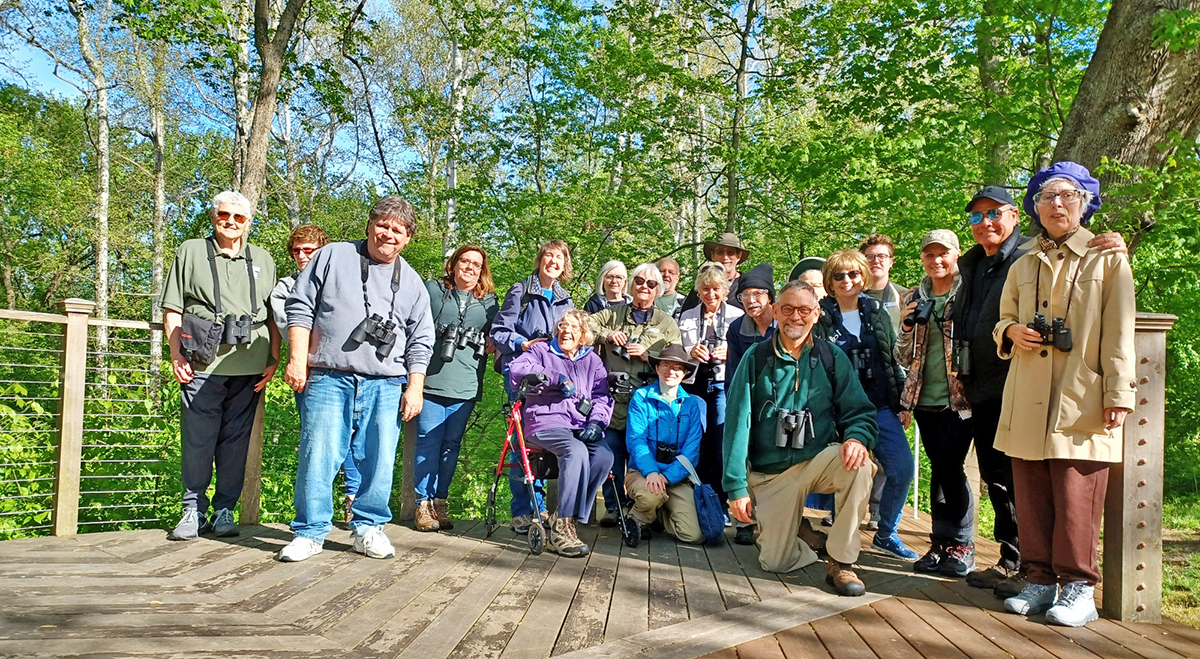
If I could go anywhere in the world and time and money were not a concern…
I would love to take an extended trip through Africa to enjoy safaris and experience the culture. I would start in Botswana for a safari, to see the elephants and lions, then head to Zambia to see the fruit bat migrations. From there I would head to Rwanda to see the mountain gorillas, then on to Tanzania and Kenya for more safaris. Then I would finish off in Gabon, the largest protected African rainforest, where I would hope to see the forest elephants. Gabon has about 60% of the world’s remaining African forest elephants, which are smaller than the more widespread African bush elephants. Since 2021, the forest elephants have been on the critically endangered red list of the International Union for Conservation of Nature.
Fun facts about me and my family
1. Travel! Paulette and I love to travel. We watch our spending and save money so that every few years we can go on a special trip. On a trip to Alaska, we spent three nights camped with coastal brown bears near the salmon runs. Our camp was protected by a battery-powered electrical fence, to keep the bears out. Of course, the bears weren’t really interested in us, they had so many salmon to eat. We would see as many as 18 bears together, gorging themselves on the salmon. In 2014 we went to Nepal and trekked into the mountains and jungles. We stayed in a small Nepalese village for a week. The Nepalese people are the nicest people I’ve ever met, so kind, generous and open. We’ve also been to Ecuador, Austria and Italy. Earlier this year, for our latest trip, we went to the rain forest of Costa Rica. We saw lots of wonderful and exotic birds, including a king vulture, a resplendent quetzal, and 16 different species of hummingbirds.
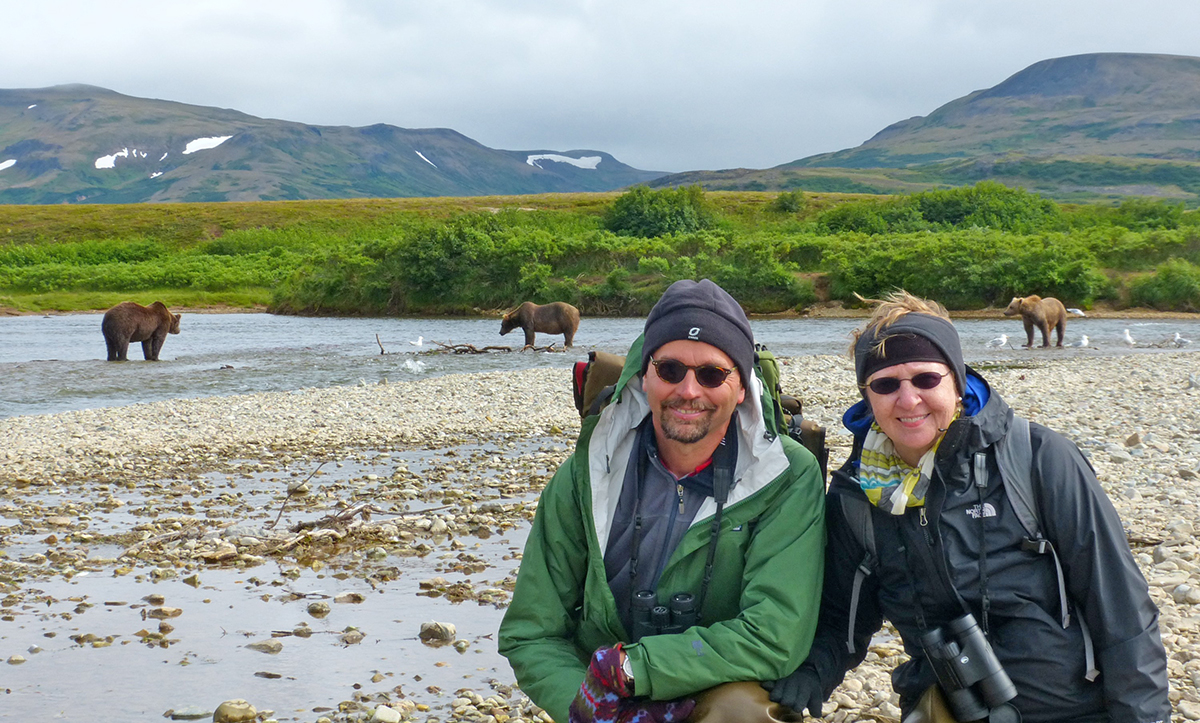
2. Grandkids! I have two step grandchildren, a granddaughter aged 10, and grandson aged 8. They live in Queens, New York and we get to spend time with them, either here or there, several times a year. When my granddaughter was about four, she decided she was going to send me to jail for an imagined offence I had made against a cow. She sent me to my bedroom, shut the door on me, and wouldn’t let me come out. Sending me to jail has since become a regular game. As soon as I see my granddaughter, she declares outright, “Poppy, you’re going to jail!” She locks me up in a room again and I’m supposed to try to escape. One year, I tried that and both my grandkids grabbed me and dragged me back into the room, back into jail. I asked my granddaughter recently, “How long are you going to keep on sending me to jail?” She thought for a second, and said, “Oh, I think until I’m about fourteen!” So, I’ve got about four more years of jail time to come! It’s all great fun!
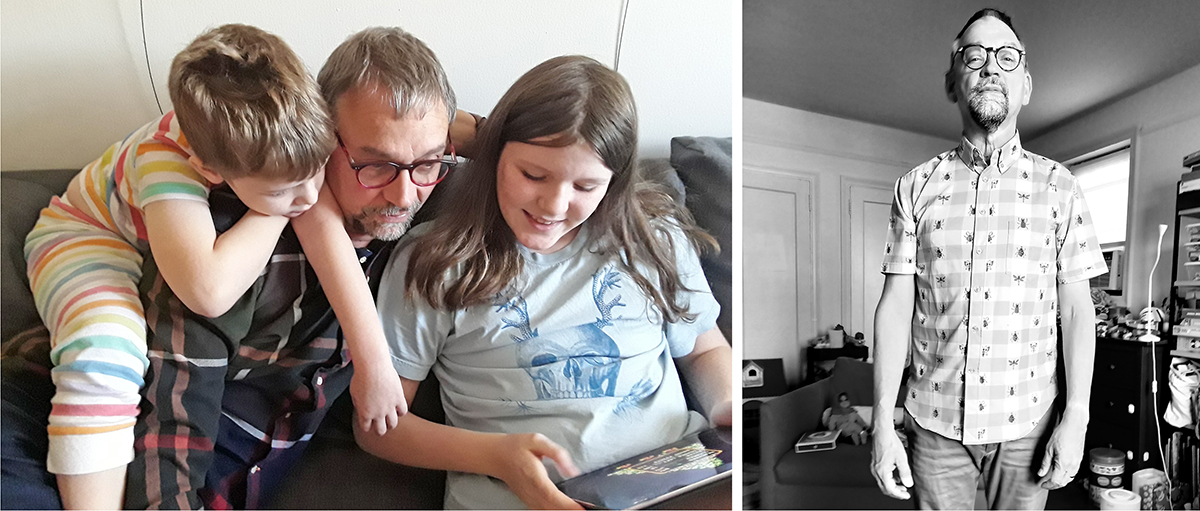
3. Wood carving! I’ve been interested in wood carving for many years but have taken it really seriously in the last few years. I have a wonderful teacher, an artist who lives in the Seattle area, who says we should acknowledge that carving wood is hard, and there’s no reason to put the body under undue stress in the early stages of creating a carving. It’s okay to use power tools in that first stage of whittling a block of wood down to the rough shape of your final piece. That’s when you need to use your manual tools to finish your carving. I use basswood or butternut as my base, which I buy up in Amish country, although the wood mostly originates in New York state. It’s a lot cheaper to buy the wood this way, than to buy it online. I often make pencil drawings of objects that I want to carve. Usually, these are stylized creatures of some kind, including octopuses and squid and other marine creatures. The largest piece I’ve made was a flounder- or halibut-shaped bowl, about 18 inches long, which took me about 40 hours to make. I make a lot of ornaments for Christmas gifts, including a snowy owl and various Santa-like squid, which I call Squiddy Claus.

My favorite food and dessert
I love pasta, in all its incarnations, in all its forms. I love the entire experience of making my own pasta. I have a large board and a 36-inch-long mattarello, a traditional pasta rolling pin, which I use to roll out my own pasta sheets. Perhaps my favorite dish of all is my home-made Bolognese sauce. I use ground beef and pork, and add celery, onion, carrot, tomatoes and wine, with a dash of herbs and spices like a bay leaf and nutmeg. I cook it slowly in the oven, which prevents burning, and serve it with tagliatelle, a quarter-inch-wide egg pasta noodle that I also enjoy making myself. I do a lot of cooking at home, but Paulette does most of the baking. For dessert, I like nothing better than Paulette’s home-made chocolate chip or oatmeal cookies.
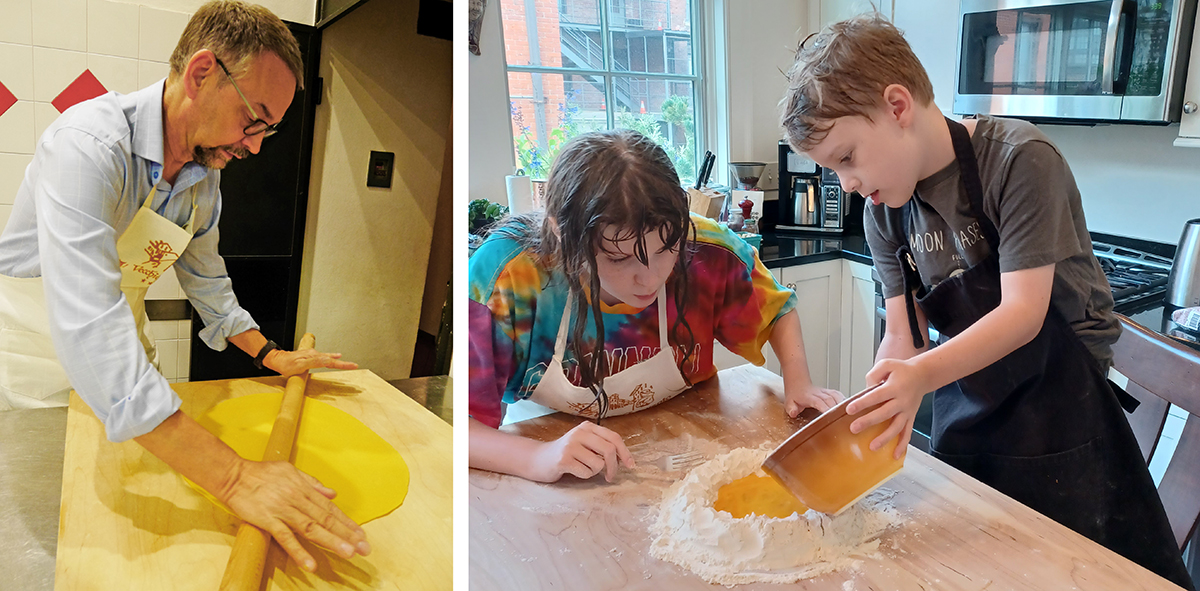
My favorite entertainment
Keeping with the pasta theme, one of my key entertainments is watching Pasta Grannies. There’s a new episode every Friday on YouTube. These 10-minute episodes are fascinating. The show travels throughout Italy to interview a ‘pasta granny.’ The most recent granny was 103 years old! Most of the pasta grannies are quite old, often in their nineties, and we get to learn details of their lives and their towns, as well as learning about local pasta traditions and discovering new techniques for making pasta.
Another YouTube tradition that I love to follow from summer through October is the live stream of the Katmai National Park Bear Cam. It’s set up in Brooks Falls, Alaska, by the salmon run, and we get to see the transformation of a whole host of brown bears from thin and scrawny to “super chunks.” It culminates in October with an online tournament called Fat Bear Week, and viewers get to vote for the ‘fattest’ bear. The bears we see are given numbers or names. A bear named Otis has won the fattest bear award a couple of times already. One year, Otis was seen to eat 40 salmon in only about four or five hours, which equates to about 100,000 calories!
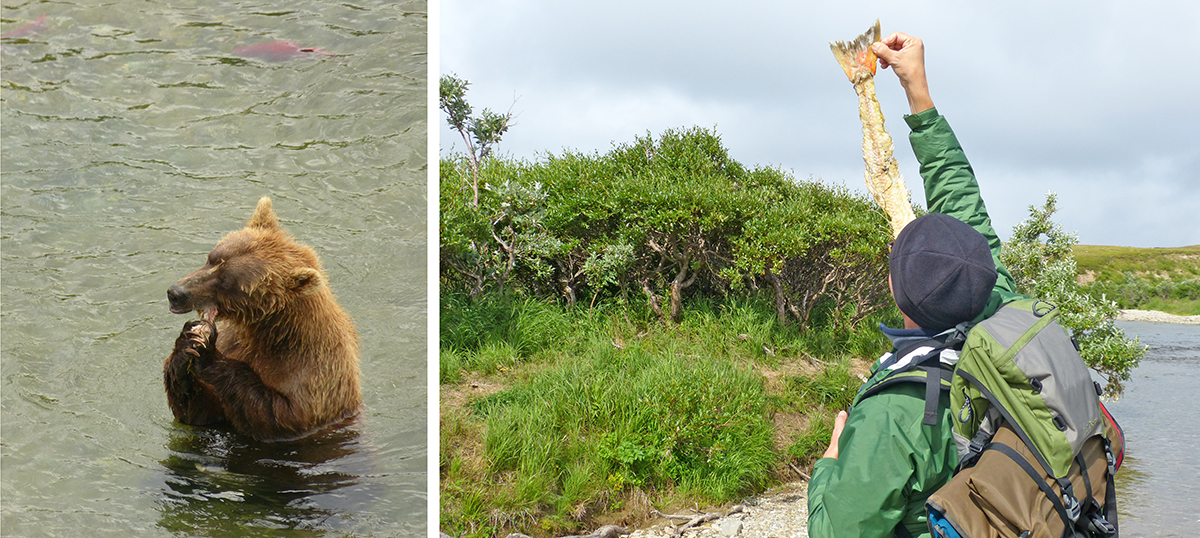
Paulette and I enjoy watching detective mystery shows on Acorn TV or PBS. One of our favorites is Murdoch Mysteries, a Canadian show set in Toronto in the early 1900s. William Murdoch is a detective but also an inventor. Although it’s fictional, real historical people often turn up in the shows, including Queen Victoria, Nikola Tesla, Teddy Roosevelt, H G Wells, and Arthur Conan Doyle — the inventor of Sherlock Holmes. Acorn TV also has a French-made detective series we really enjoy, called Candice Renoir, set near Marseilles.
Another keen interest of mine is gardening, but as we live in a townhouse, I’ve had to adapt to balcony gardening. I grow a lot of plants both on the front and back balconies, including tomato plants, pepper plants, figs, various herbs, and flowers to attract hummingbirds. Watering is by watering can only, which can be a bit of a pain, especially in hot weather, but it’s all worth it.
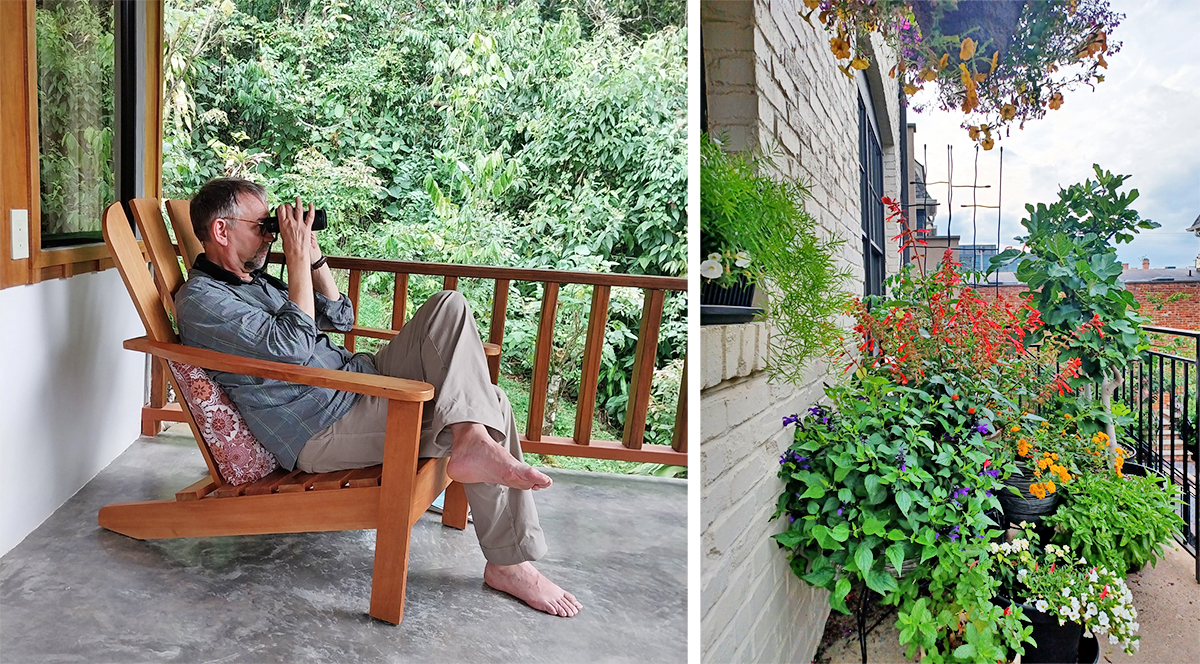
If I had just 60 seconds to share why I love working at Metro Parks, I’d say…
I love being outside and interacting with people, both fellow employees and park visitors, and truly enjoy sharing information with them about nature and science.

I love this Metro Park feature! The Metro Parks are a huge part of my life and the Naturalists are consistently warm and generous with their time and knowledge. It’s nice to be able to learn about them. Scott’s a particular favorite of mine, and while I’ve gotten to know him well over the past few years, I learned still more from this latest installment.
I and a couple of friends participated in Scott’s “Tree ID” program on Aug. 6. Scott did a great job of introducing the group to the basics. Today, I read the feature story on him. Interesting guy!